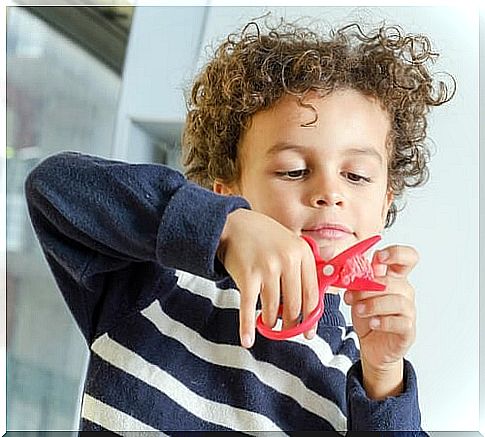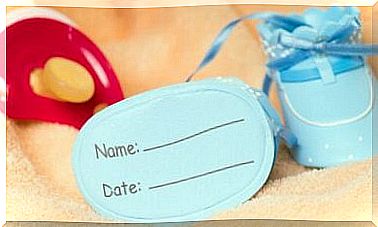Teach Your Child To Cut With Scissors

Teaching your child to cut with scissors is easy if you use the following tips.
If it does not get it right at first, just be patient. Guide it to prevent it from being discouraged.
Teaching children to cut with scissors can be an exciting process. It contributes to the development of their fine motor skills.
The main goal of the children is to develop the movements that allow them to use their fingers, hands and eyes in interaction.
Cutting with scissors can strengthen the hand muscles. It also stimulates the skills required to handle other tools in the future.
By learning to use scissors, children will also be prepared to use, for example, pencils, buttons or knives.
The act of cutting promotes eye-hand coordination. The sight allows the child to recognize the shape and guides the hand to make the necessary movements.
Cutting with scissors also requires asymmetrical and synchronized coordination with both hands. The child uses one hand to hold the scissors and the other to hold the paper.
As a parent, you need to help your child while staying patient. Your child will need time to learn how to use scissors properly.
4 tips on how to teach your child to cut with scissors
To make the task easier, here are some tips that can help the child quickly acquire this new ability.
Here are four tips on how to teach your child to cut with scissors:
1. Select a suitable pair of scissors
It is important for children to use scissors that are adapted for their small hands. We should use simple scissors that have plastic blades and only allow them to cut into paper.
The scissors should also have a round tip to be safe for the children.
If the children’s hands are not big enough to open and close the scissors , this means that they are still too small to learn how to cut.
If the child is left-handed, you should get a left-handed pair of scissors to facilitate the process.
Keep all of this in mind when looking for a suitable pair of scissors for your child.

2. To learn to open and close the scissors
The first thing your child needs to learn is how to handle the scissors and open and close it with one hand.
In the beginning, this gesture is really complicated for children. They may start using the scissors with both hands.
You can do some exercises with your child to get used to his first scissors by performing opening and closing movements.
A good start would be to practice only with its hands and then with the scissors.
3. Develop precision
Once your child is comfortable enough with the scissors to cope with the basic movements, you can begin to develop the child’s precision with simple activities.
A good example of a simple activity is to put a sticker in the middle of a piece of paper and have the child cut it against it.
You can also draw a straight line on a piece of paper and ask your child to cut along the line.
You can increase the length of the line and the degree of difficulty as the child’s capacity with the scissors increases.
Using these simple exercises in the beginning increases the child’s motivation to continue the learning process.

4. Develop control
Once your child can cut along straight lines and has control over the scissors, it is ready to cut several other shapes. It can start drawing squares, rectangles and circles on paper and cut them out.
At first , it can be difficult to cut circles because it is difficult to change direction.
If the child has difficulty cutting triangles, you can show it how to stop at the corner and then turn the blade in a new direction so that it can continue to cut.
Once a child has learned to handle the scissors, he can easily follow the contours of an object and the silhouettes of his favorite characters.
Finally , it is important that you let the child experiment on their own while teaching them to cut with scissors.
Even if it cuts a little at some point, you should let it improve its motor ability by experimenting.









